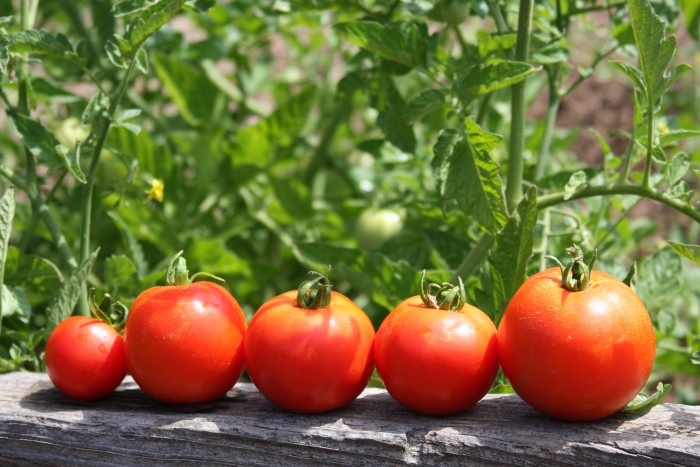
Discovered in the well waters in Epsom, England, Epsom salt has proven itself useful time and time again over the years. Made up of hydrated magnesium sulfate, it’s commonly used as a saline laxative or pain reliever. Unbeknownst to most is that it can also work wonders for your garden- we’ll talk more about how below.
Promote Seed Germination
Magnesium helps your seeds by building up the cell walls, providing you with stronger seedlings and more of them. Mix 1-2 tablespoons of salt at the bottom of every hole, or about 1 cup for every 100 square feet of tilled soil, and your garden is guaranteed a power boost.
Supplement Nutrient Intake
Used as a common additive to commercial fertilizers, Magnesium has an outstanding ability to assist roots in absorbing essential elements like sulfur, nitrogen, and phosphorus. Epsom salt is perfect for addressing the issue naturally, so that you won’t need the chemical fertilizers at all.
Manage Transplant Trauma
Anyone who’s been in the gardening game for a while has witnessed how your plants can suffer after being moved from one location to another, the young ones especially. Try treating your ‘transplant’ plants with Epsom salt after the move to help the roots recover. Sprinkle some salt in the hole and cover it with a thin layer of soil before establishing your plant. The thin barrier layer will prevent the roots and the concentrated magnesium from making contact too soon.
Eliminate Pests in Your Garden
Unlike Sodium Chloride (table salt), Epsom salt won’t dehydrate and cause insects like snails and slugs to shrivel up. It is, however, made up of sharp crystals that irritate and scratch at the bodies of any potential threats to what you have growing. Beware that Epsom salt also dissolves very easily, so even a small amount of rain will likely wash it away.
Improve Your Peppers
Measure the height of your plant and sprinkle about 1 tablespoon of Epsom salt per foot around the drip line of the plants once a week. Peppers are an extremely popular garden plant as they have an above-average fruit to plant size ratio, and thus require a dose of magnesium every two weeks for maximum results. Also remember that it is extremely important not to overwater peppers, the hotter ones specifically, as it can detract from the heat factor.
Better Your Tomatoes
Because the plant size ratio is heavier than average, tomato vines are often at risk of a calcium and/or a magnesium deficiency. Now, the magnesium deficiency can be dealt with by feeding your tomatoes twice as much Epsom salt as other plants. Unfortunately, tomato fertilizers tend to contain calcium (to treat the calcium deficiency) which will combat the magnesium for root absorption. Therefore, it is recommended that you treat your vines with 2 tablespoons of Epsom salt dissolved in one gallon of water every 2 weeks.
Produce Sweeter Fruit
Use Epsom salt on your bushes, vines, and fruit and nut trees to increase energy and chlorophyll levels in the plant cells. As producing fruit is the most difficult part of a plant’s life cycle, more energy creates more sugar, which means greater amounts of sweet, healthy fruit.
Knock Out Withering Foliage
Because magnesium is an essential component in producing chlorophyll, yellowing leaves are a sign of a magnesium deficiency. Sprinkle 1 tablespoon of Epsom salt per 12 inches of height around your plants once every month to achieve optimal foliage for vegetables, shrubs, flowers, trees, and even grasses.
Stop Leaf Curling
Curling leaves can also be a result of a magnesium deficiency. To prevent this, follow the same instructions listed directly above. To allow your plants to absorb more quickly, combine one gallon of water with 2 tablespoons of Epsom salt and pour it directly on the leaves.
Roses
Like with seeds, Epsom salt will produce larger blossoms and more of them in addition to the chlorophyll boost bringing about darker leaves. Successful rosarians claim that it even helps in the growth of new canes from the plant’s base. To achieve maximum results, roses should be treated with Epsom salt when planted, when new growth is first seen, and once again when they are in full bloom. Roses with naked roots can be soaked in dissolved Epsom salt and water before planting to get a head start on the process.
In addition to being easy on the wallet, Epsom salt is completely harmless to your soil due to its being pH neutral. It’s quick, easy, and breaks down into three components- magnesium, sulfate, and water, all of which are beneficial to plant life. So why not try it out and reap the benefits for yourself?

